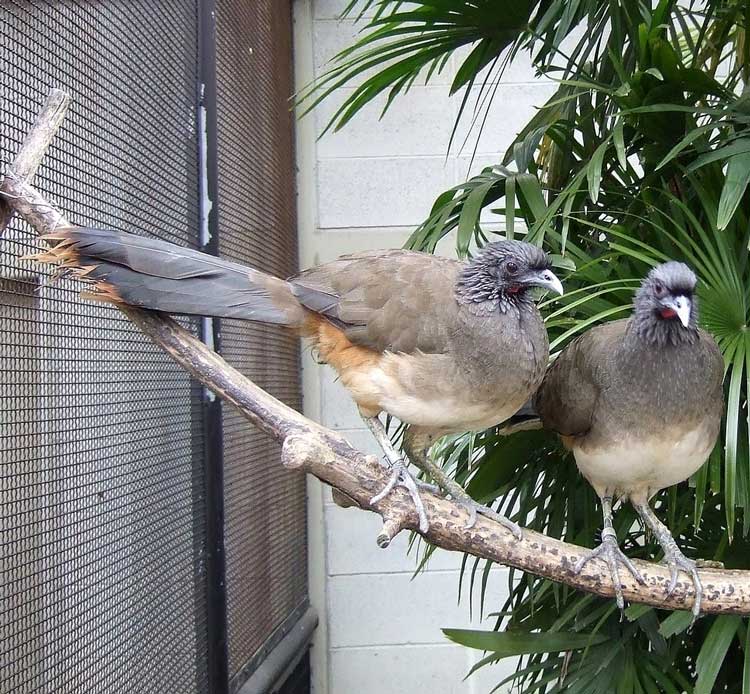Ortalis vetula (*) Cladus: Eukaryota Name Ortalis vetula (Wagler, 1830) Reference Isis, oder Encyclopädische Zeitung 23 col.1112 Vernacular names The Plain Chachalaca, Ortalis vetula, is a large bird in the Cracidae family. It breeds in tropical and subtropical environments from mezquital thickets in the Rio Grande Valley in southernmost Texas, United States to northernmost Costa Rica. In Central America, this species occurs in the Pacific lowlands from Chiapas, Mexico to northern Nicaragua and as a separate population in Costa Rica, where its range is separated by a short distance, as a disjunct population.
The Plain Chachalaca is 56 cm (22 in) long and has a mass of 0.65 kg (1.4 lb). It is long-necked with a small head and bare throat. Adults have a greyish head and neck with a dull olive-brown body and wings. The underbelly is pale to ochraceous and the tail is blackish with green gloss and buffy-white tip. The iris is brown and bill is black; orbital skin and the feet are dull grey. Behavior This species frequents dry and moist forests, especially where interspersed with scrub and savanna. Usually found in groups of up to 15 birds, the Plain Chachalaca is furtive and wary and prefers to escape from danger by running swiftly on the ground or leaping and gliding through brushy tangles. The Plain Chachalaca feeds in trees or on the ground on fruit (figs, palms, Sapotaceae), seeds, leaves, and flowers. It is sometimes a pest of crops such as tomatoes and cucumbers. The call is a loud, raucous RAW-pa-haw or cha-cha-LAW-ka, often by several birds in a rhythmical chorus, especially in early morning and evening, usually from well up in trees. It also produces peeping whistles and cackles. Others describe chachalaca calls as irritating noises mimicking a bunch of arguing women. Reproduction The Plain Chachalaca typically breeds in the early wet season. The nest is a shallow saucer of twigs and plant fibers, lined with leaves, in thick vegetation. The clutch is 2-4 rough-shelled white to cream eggs. Conservation The Plain Chachalaca population is 500,000-5,000,000 (2006 IUCN Red List). It is not threatened. The subspecies from Útila Island, O. v. deschauenseei, has sometimes been listed as extinct, but recent surveys have confirmed that it still survives.[2] Taxonomy The White-bellied Chachalaca, Ortalis leucogastra, on the Pacific slope from far southern Mexico to Costa Rica was formerly considered a subspecies of the Plain Chachalaca. Today all major authorities recognize them as separate species. References 1. ^ BirdLife International (2004). Ortalis vetula. 2006. IUCN Red List of Threatened Species. IUCN 2006. www.iucnredlist.org. Retrieved on 2007-01-03. Database entry includes justification for why this species is of least concern * Stiles and Skutch, A guide to the birds of Costa Rica ISBN 0-8014-9600-4 Source: Wikipedia, Wikispecies: All text is available under the terms of the GNU Free Documentation License |
|

